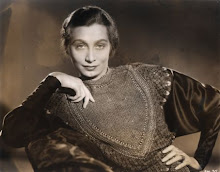
My Sister Eileen
Although the Second World War started on the American home front with a Sunday afternoon radio broadcast -- as best I recall it did not begin for us immediately. It did not start until our uncles stopped coming over on Sunday, because they were over there or on their way over there. And over there was all kinds of places not dreamed of by George M. Cohan: Guadalcanal, Midway, Tunisia, or the Kasserine Pass to name a few.
But we were over here and continued to go to the movies at least twice a week. And the movies we saw were an odd mix of Thirties projects left in the Hollywood hopper, of non-World War Two themed movies with World War Two endings tacked on, and then the usual mix of Boston Blackies, Blondies, and Maisies, which we likely preferred. (Each of these was waiting to be brought into the global conflict that was developing.)
Within this mix, was My Sister Eileen, born in The New Yorker, and graduated from a 1940 Broadway play into this 1942 Hollywood film. (It has an interesting history beyond the scope of this posting.) I remember seeing the film sometime in my youth, but likely not at the time of issue. (Popular films in those days were frequently reissued for years and I suspect I saw Eileen on one of those iterations.)
.jpg)
It was a movie most of my family would have talked about, because my mother was a reader who liked movies. And she probably liked this movie because it took place in Greenwich Village, which was “just downtown” from where we lived in the Bronx (never just Bronx). It was of added interest because my Uncle Artie (my mother’s sister’s husband) had been brought up in the Village. My father, conversely, read newspapers only, disliked movies, and probably disliked the Village. Nor did he think much of Uncle Artie (who was my favorite uncle).
The charm of Hollywood’s Greenwich Village has always been steeped in a bohemian mist. Dying artists paint leaves on back yard walls to save failing beauties. And the films show the inconvenience of living, but not the reality, which is fine by me. New York apartments were not the most pleasant places in the early 1940s – particularly basement apartments. (If you do not know what I am talking about – don’t ask.) So Hollywood’s vision of Greenwich Village will do nicely thank you. One has the feeling that O’Henry slept there.
My Greenwich Village was a mixed place of schoolyards, small buildings and taverns. My Greenwich Village was artists and writers, bohemian types, and eccentric ethnics. It was little Italian restaurants with red checked table cloths. And there were candles with melted wax-filled candle holders. And very friendly trattoria owners. I am unsure how much of my memory is from actual visits and how much from the back lots of movie studios -- likely a bit of each.

Thinking of Italian restaurants, consider what is often served as a starter. An antipasto: a suitable metaphor for My Sister Eileen. Tasty tidbits in small portions. George Tobias is very good as the landlord/artist, Donald MacBride as a Hollywood cop (New York cops were quite different), and June Havoc is a bit over the top. Elizabeth Patterson is just perfect for the few minutes allotted to her as Gramma. Allyn Joslyn owned slick, but harmless. Gordon Jones does a bad Broderick Crawford (as in Larceny, Inc). I had forgotten that Jeff Donnell was in films that early and she looked good. Brian Aherne has something to do with keeping Eileen’s sister happy. And there are a half dozen Portuguese sailors cavorting around.
And if you want to see the man who was later engaged to (and directed) Kim Novak, Richard Quine makes an appearance. He’s a hard one to figure. It is said George Brent was a very exciting guy in real life and that Nelson Eddy could be a tough guy. And watching the man who would one day be engaged to Kim Novak proves the difficulty of watching movies in retrospect.
But, I still like My Sister Eileen, although the woman playing Eileen leaves me cold: Janet Blair. I have difficulty understanding what all the fuss is about. It surely cannot be about a character played by Janet Blair. And then her sister is played by Rosalind Russell -- and you know how annoying she can be without Hawks. (To be fair, my wife pointed out that Rosalind was a pretty good trouper in this, particularly in the slapstick and madcap routines.)
Yet My Sister Eileen has stood my test of time and brought me back to the streets of lower Manhattan as they may, or may not, have existed in the early years of the war. And it took me back to a place in time when my uncles were over there while I was safely over here.
By the way, that favorite uncle, whom I mentioned, took a glider ride into Normandy on June 6, 1944. (My father probably read about it in the paper.) Uncle Artie fought through the rest of the war and came home to live a full life. I wish I had been wise enough to have known him better. He was a slim, gentle man, a second generation Italian American, and his name was Arthur Giovaninni.
.jpg)
Note on the paintings:
Beulah R. Bettersworth, Christopher Street, Greenwich Village, Oil on canvas, 1934, Smithsonian American Art Museum
John Sloan. The City from Greenwich Village, 1922. National Gallery of Art
Normandy, 1944. HitenMistry, Texture Artist






No comments:
Post a Comment